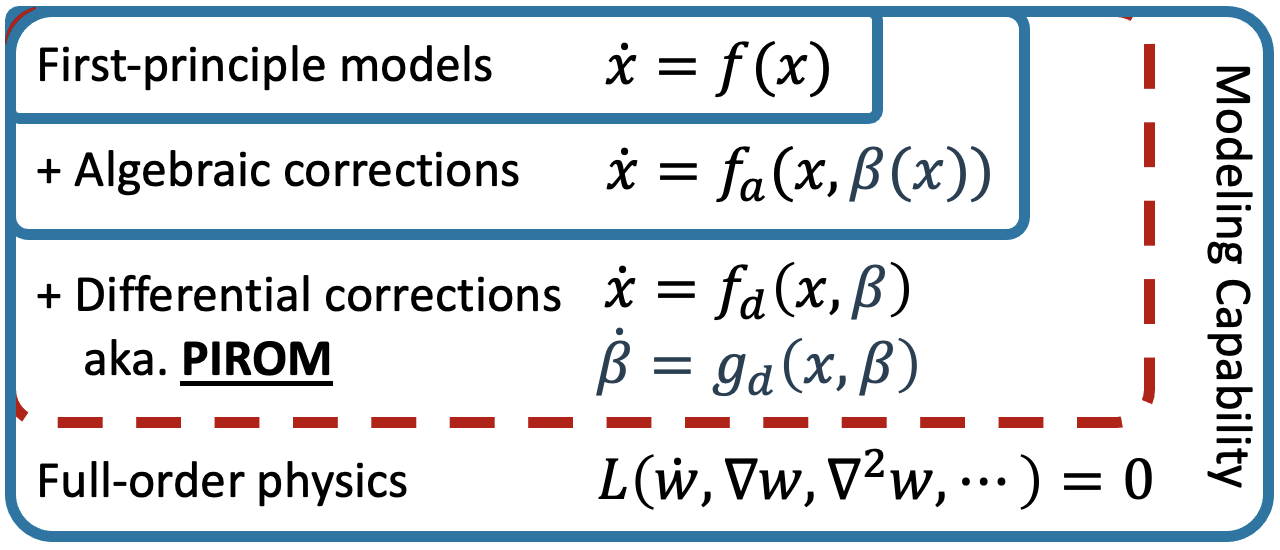Published: Jan 2, 2023 by Daning Huang

We have been developing a novel physics-infused reduced-order modeling (PIROM) approach for efficient and accurate modeling of nonlinear dynamical systems. The PIROM consists of
a physics-based dynamical component that
- represents the known physical processes, and
- ensures validity of the model over a wide range of operating conditions
and a data-driven dynamical component that
- represents the unknown physical processes, and
- corrects the dynamics for higher predictive fidelity
Both components are differential equations, and hence new algorithms based on optimal control theory are developed to train these models.

One benchmark problem that we considered is the high-speed aerothermal modeling of a heat-conducting and deforming structure. The PIROM demonstrated superior performance than the conventional surrogate models, in terms of accuracy, sampling efficiency, and generalizability over a wide range of operating conditions and structural boundary conditions.
Furthermore, the PIROM-based aerothermal model is applied to the aerothermal load modeling for hypersonic aerothermoelastic (ATE) analysis and is found to accelerate the ATE simulations by two to three orders of magnitude while maintaining an accuracy comparable to high-fidelity solutions based on computational fluid dynamics.
Figure on the right illustrates the superior capability of PIROM in coupled ATE simulation in a scenario unseen to all models.
- TVI - physics-based differential model: Simple but not accurate
- POD/Kriging - conventional surrogate: Brutal force and limited range of applicability
- PIROM - Accurate and generalizable.
Note that coupled analysis is the most challenging scenario for testing a ROM, as modeling errors propagates and accumulates over time.
The PIROM-based ATE solver is further demonstrated by a parametric study on the effects of boundary conditions and rib supports on the ATE response of a compliant and heat-conducting panel structure. The results not only reveal the dramatic snap-through behavior with respect to spring constraints of boundary conditions but also demonstrate the potential of the PIROM to facilitate the rapid and accurate design and optimization of multidisciplinary systems such as hypersonic structures.
For more details, see our papers SciTech2021, SciTech2022, AIAAJ2023, SciTech2024, SIAM UQ24.